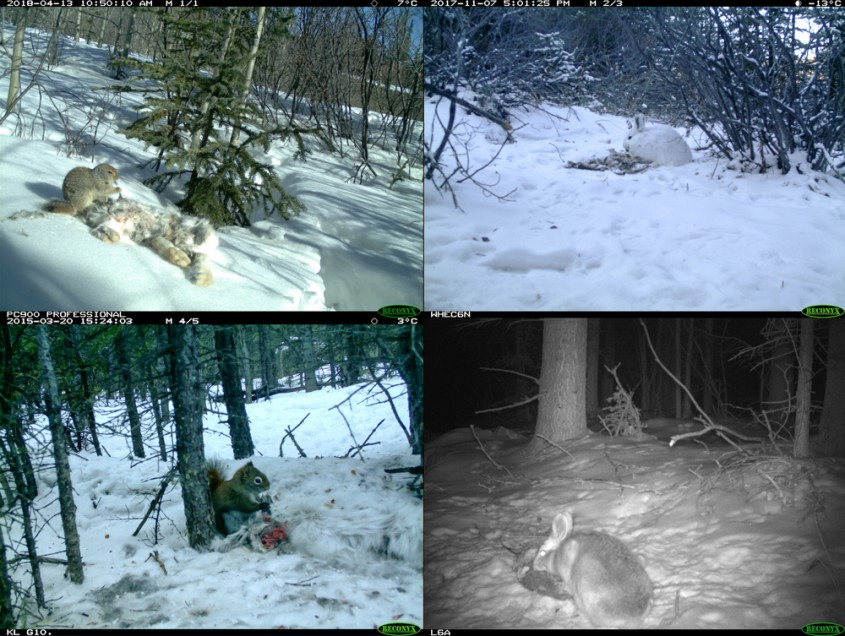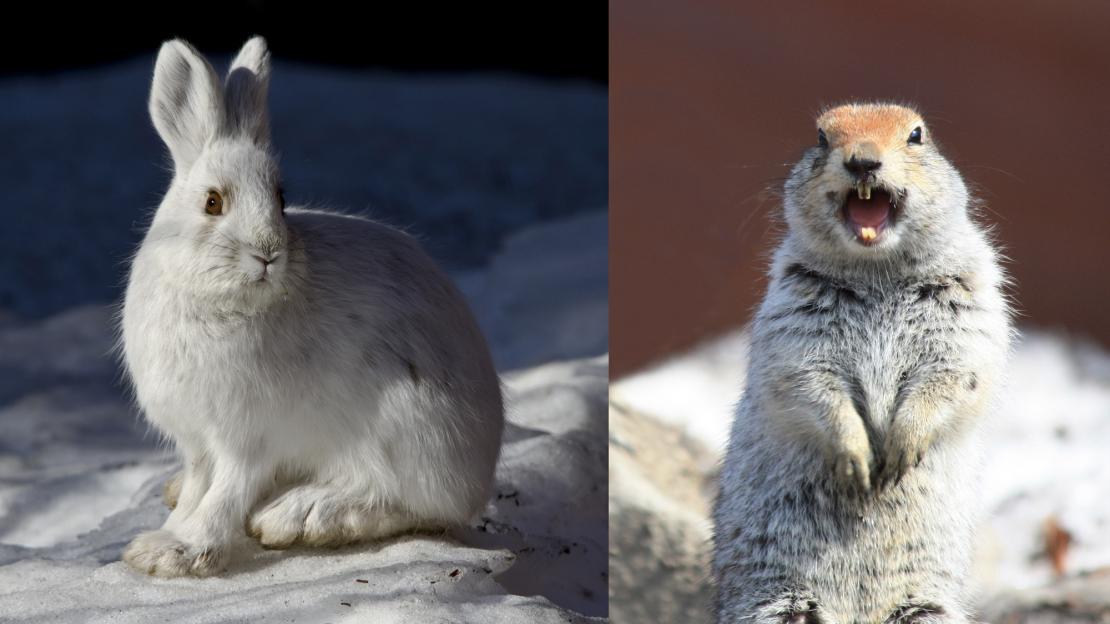There are many animals in the boreal forest you would expect to see chowing down on meat. Great horned owls, wolves, foxes, lynx, grizzly and black bears, just to name a few.
But over the years researchers have seen the most unexpected animals eating flesh and feathers, like snowshoe hares and arctic ground squirrels.
“It was surprising to capture some of this behaviour on camera,” says Michael Peers, a PhD candidate at the University of Alberta who is co-supervised by U of T Scarborough biologist Rudy Boonstra.
Peers is studying snowshoe hare survival under different climate conditions in the boreal forest, which is Canada’s largest forest ecosystem.
He first noticed the hare meat-eating by accident after setting up motion-sensing trail cameras near hare carcasses as a side project just outside of Kluane National Park in Yukon. Expecting to see predators eating the free hare meat, he was surprised to see hares chowing down instead.
So he started systematically setting up cameras in grids to get a more detailed look. Over a two-and-a-half-year period he found that hares scavenged on 20 out 161 carcasses observed. The behaviour, which was published in a recent study, only happens during wintertime. In some cases, it even appeared that hares were defending the carcasses against other hungry hares.

From the footage Peers also observed the hares dining on loons and grouse, and in an ironic twist, on the carcass of a Canadian lynx, their main predator. Since the paper was published, he’s also captured on camera hares scavenging on the carcass of great horned owls, another one of its main predators.
What really shocked him was seeing the hares plucking off and eating bird feathers.
“As far as I know it’s the first time we’ve observed these hares eating feathers, which is fascinating because they’re really hard to digest, but full of protein,” he says.
Peers says the winter meat eating is likely because the hares are trying to supplement their diets with protein, which is low during the long winters. It could also be that hares are just trying to get more food in one of the coldest, most unforgiving places on earth.
“Their diet during winter isn’t the best – when the snow starts covering the ground it mostly consists of eating twigs from birch and willow shrubs or bark from trees,” he says.
Peers says the scavenging took place on smaller animal carcasses and that it’s unlikely hares would scavenge on larger animals like deer since it would be difficult for them to open up their hides. There would also be a greater chance of getting attacked by predators.
Boonstra, a professor in the department of biological sciences, has been doing field research in Canada’s north for more than 40 years and co-authored a book on the boreal forest ecosystem, of which the snowshoe hare is a keystone species.
He says arctic ground squirrels also scavenge for meat but unlike snowshoe hares they also act like predators. Boonstra first noticed this behaviour while studying lemmings in the Arctic in the 1980s.
“It was driving me mad because I was putting so much effort into studying lemmings and they were constantly getting killed and eaten by these [arctic ground] squirrels,” he says.
READ MORE: WHAT SNOWSHOE HARES CAN TELL US ABOUT THE LONG-TERM CONSEQUENCES OF FEAR
Boonstra, who published his findings in a 1990 study, says the squirrels will actively hunt and kill lemmings, happily dining on their brains in the process. Arctic ground squirrels are also known to hunt, kill and eat baby snowshoe hares in the boreal forest.
He says there’s also anecdotal field reports from researchers about caribou eating the heads off sandpiper chicks. Peers has heard the same about caribou, adding there is published research on white-tailed deer and even cows eating eggs from bird nests.
What this behaviour suggests is that many animals simply can’t be classified as strictly herbivores.
“To be fair, it’s not like a major portion of the hare diet is coming from meat, they’re still primarily herbivores,” he says.
“It’s just that these classifications are a bit more complicated than how it gets described in a typical high school biology class.”
